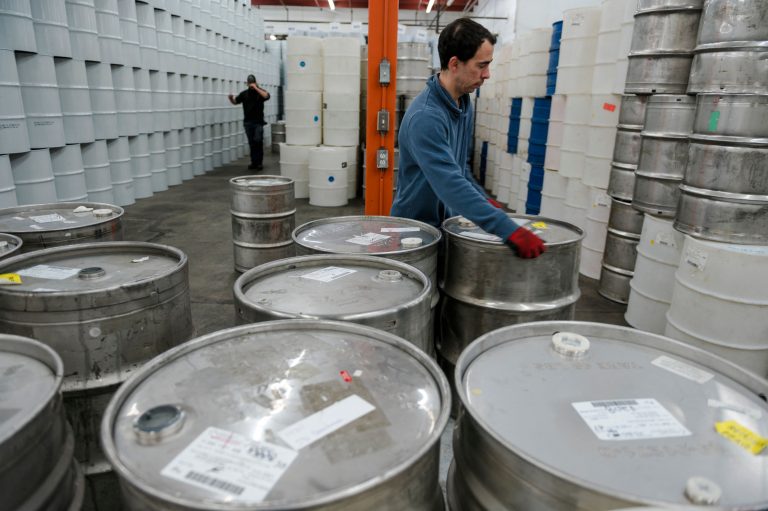A three-day meeting of Federal, Provincial and Territorial Ministers of Agriculture concluded in Saskatoon on July 22 with several provinces’ disappointment over the Liberals’ intent to impose fertilizer emissions reductions. Conservatives are calling on Canadians to support farmers in pushing back against the policies that will impact Canadian agriculture.
The Liberal government is pushing ahead with its goal, introduced in December 2020, to reduce absolute levels of greenhouse gas emissions arising from fertilizer use by 30 per cent below 2020 levels by 2030. Specifically, it aims to reduce nitrous oxide emissions associated with synthetic nitrogen fertilizer use.
Federal Minister of Agriculture and Agri-Food Marie Claude Bibeau said the targets are about reducing the emissions caused by fertilizers, not the use of fertilizers themselves.
“The idea is to invest in research and innovation, and we’re sure that we will find new types of fertilizer through better practices, through new technologies—ways to be even more sustainable,” she said.
After the meeting, the ministry also issued a press release promising to inject $500 million in new funding to support Canadian farmers and food security.
Success
You are now signed up for our newsletter
Success
Check your email to complete sign up
However, fertilizer sector and farm producer groups have argued that, with the technologies currently available, a reduction of nitrous oxide emissions can’t be done without reducing fertilizer use.
Loss and gain

According to a September 2021 study commissioned by Fertilizer Canada, which represents the manufacturers and distributors of a range of fertilizers, slashing fertilizer use by 20 per cent could cost Canadian farmers more than $48 billion in lost sales due to lower yields by 2030. This loss far exceeds the $550 million over 10 years the federal government has announced to help farmers meet emission targets.
“This short-sighted approach to reducing emissions will result in the need to reduce nitrogen fertilizer use and will have considerable impact on Canadian farmers’ incomes and reduce overall Canadian exports and GDP,” Fertilizer Canada said in a report last May.
“It is estimated that a 30 [per cent] absolute emission reduction for a farmer with 1000 acres of canola and 1000 acres of wheat, stands to have their profit reduced by approximately $38,000 – $40,500/ annually,” the report said.
In Western Canada, that means canola revenues would be reduced by up to $441 million while wheat revenues could see a reduction of $400 million, it estimated.
“Over the past several years, farmers have been seriously harmed by the carbon tax, transportation stoppages, non-science-based decision making and now with the proposed 30 per cent reduction in fertilizer emissions,” the Western Canadian Wheat Growers Association said in a press release on July 18.
While the impact on Canadian farmers will be harsh, the impact on the environment from fertilizer reduction will be negligible. Even if Canada eliminated fertilizer use completely, it would only reduce world emissions by a fraction of a percent.
According to Canadian government data, synthetic fertilizer use is responsible for less than 2 per cent of Canada’s carbon emissions. Canada, in turn, is responsible for about 1.4 per cent of global emissions.
Meanwhile, the Canadian fertilizer industry already has a program called 4R Nutrient Stewardship that would, if rolled out across the major farming areas, cut emissions by 15 to 22 per cent while also boosting profits by using fertilizers more efficiently. The government’s insistence on the 30 per cent figure thus translates to a reduction of about 0.1–0.2 per cent of Canada’s 2019 emissions and about 0.002–0.005 per cent of world emissions beyond what the industry works to achieve on its own.
Criticisms and protests
Several Canadian provincial officials say they’re concerned about the federal government’s plan to reduce fertilizer emissions in the name of climate change at a time when global food security is an issue. They criticize the federal government for not consulting the provinces “on what is achievable or attainable” but setting an “arbitrary” goal of emission reductions.
“The Trudeau government has apparently moved on from their attack on the oil and gas industry and set their sights on Saskatchewan farmers,” said Saskatchewan Agriculture Minister David Marit in a July 22 joint statement with his counterpart in Alberta, Nate Horner. Saskatchewan has nearly half of Canada’s arable land.
“This has been the most expensive crop anyone has put in, following a very difficult year on the prairies,” Alberta Minister of Agriculture Nate Horner said.

“Provinces pushed the federal government to discuss this important topic, but were disappointed to learn that the target is already set,” Saskatchewan and Alberta ministers of agriculture said in the statement.
“The world is looking for Canada to increase production and be a solution to global food shortages. The Federal government needs to display that they understand this.”
Ontario’s Agriculture Minister Lisa Thompson also released a statement on July 22, criticizing Ottawa’s “lack of flexibility and consultation” with the provinces.
“I am disappointed in the federal government’s approach to imposing fertilizer emission reduction targets when the world is struggling with food security,” Thompson said.
“As our farmers work to feed Canada and the world, we need to work with them and support their ongoing efforts to grow and produce the food we need,” she added. “The federal government needs to be true partners, rather than simply imposing targets that make it harder.”
On July 24, interim Conservative Party leader Candice Bergen also called for support for Canadian farmers.
“When the world needed #CanadianEnergy, Justin Trudeau tried to shut it down. Now, as the world needs food and should be getting it from Canada, he’s doing all he can to kill #CanadianAgriculture,” she wrote on Twitter.
On July 25, John Barlow, Conservative MP for Foothills, Alberta and the shadow minister for Agriculture, Agri-Food, and Food Security, retweeted a video he previously posted on Twitter, reiterating his arguments.
“Farmers and consumers around the world are pushing back. They’re pushing back against the European Union’s farm-to-fork agenda, which is making farming unsustainable, food prices skyrocket, and food insecurity even more of a crisis,” Barlow said in the video on June 15.
The farm-to-fork agenda was introduced in May 2020, claiming that a third of the world’s greenhouse gas emissions came from food production. The agenda aims to “[transform] the way food is produced and consumed” to reduce impacts on the environment.
“The Liberals are following the same farm-to-fork agenda and we’re seeing that with forced reductions in fertilizer use, a burdensome carbon tax, and choking red tape and regulations, which are doing the same thing to our farmers here—making them unsustainable with decreased yields, and higher food costs,” Barlow said.
“We need Canadian consumers to stand up and support Canadian agriculture, our farm families, to ensure that they have all the tools they need to be successful, not only to feed our fellow Canadians, but step up in that moral obligation to help feed the world.”
Several governments in the world, including in Germany, the Netherlands, Italy, and Sri Lanka, are complying with the farm-to-fork agenda, with policies to radically reduce fertilizer emissions and cut down the number of livestock, which has led to eruption of massive protests over the past few months in these countries.
On July 23, multiple convoy protests were launched across Canada in solidarity with farmers in the Netherlands and other European countries. At least 55 convoys rolled out in eight provinces: Alberta, British Columbia, Manitoba, New Brunswick, Nova Scotia, Ontario, Quebec, and Saskatchewan.













